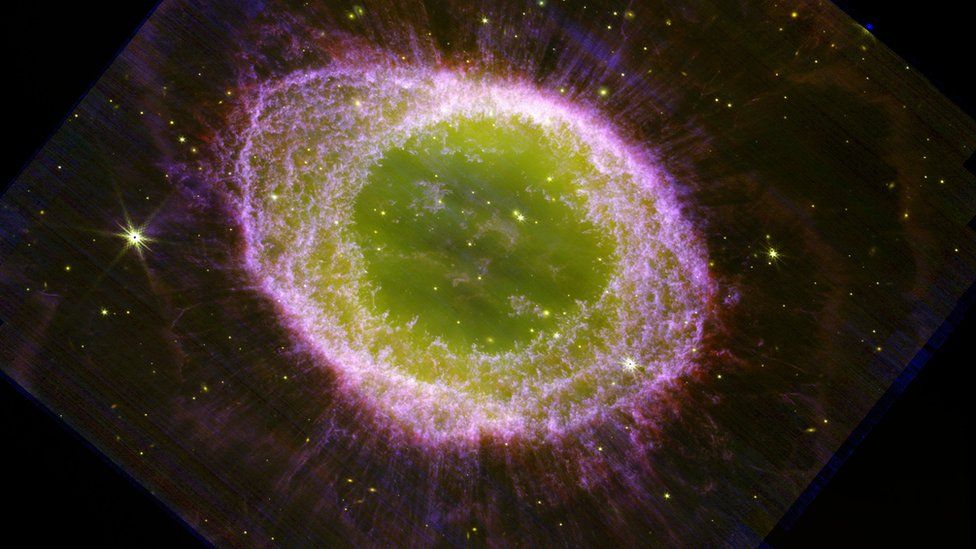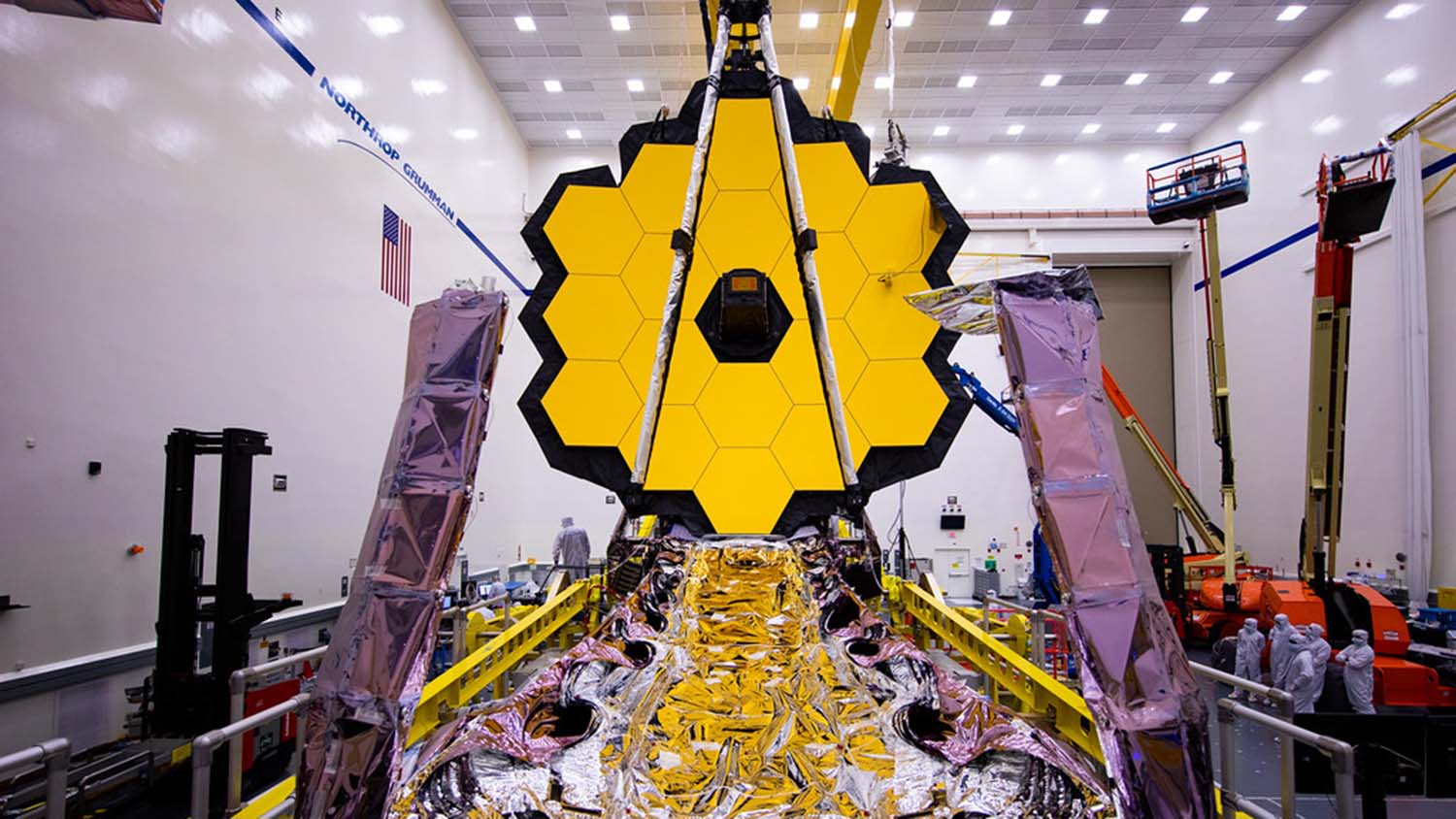The James Webb Space Telescope (JWST) has produced breathtaking photographs of the dying phases of a faraway star in unparalleled and exquisite detail. An international team of astronomers released images of the Ring Nebula, a well-known astronomical object located approximately 2,600 light-years from Earth.
This celestial object is recognized for its doughnut-shaped arrangement of fiery gas. A dying star that was ejecting a large portion of its material into space created the nebula, which included brilliantly colored rings, expanding bubbles, and delicate, wispy clouds. The sun will face a comparable destiny when it reaches the end of its life billions of years in the future.

The core part of the nebula’s white dwarf, a highly dense star that is roughly the size of a planet, is seen in the high-resolution photographs from the telescope’s near-infrared camera (Nircam), in addition to the structure of the nebula’s expanding shell. Despite having nothing to do with planets, these objects are referred to as planetary nebulae. The phrase originates from the early days of astronomy when researchers using small telescopes believed they resembled planets.
Prof. Michael Barlow, emeritus professor of physics and astronomy at UCL, who headed the team, said that stars like the sun are expected to end their lives as white dwarfs by ejecting their outer envelopes, which then form lovely planetary nebulae illuminated by the radiation from their very hot pre-white dwarf central stars.

Chemical substances that release light at various wavelengths are what gives the nebula its rainbow bands. Astronomers hope to gain a better understanding of the intricate processes that create nebula patterns as well as the life cycles of stars and the components they emit into space by evaluating the photographs. Barlow remarked that there is still a lot to learn about all the processes occurring during this caterpillar-to-butterfly-like transformation.
First Direct Image of a Planet Outside of our Solar System taken by Webb Telescope
The Ring Nebula in Lyra is one of the nearest and brightest of these planetary nebulae and is thus a perfect target for JWST to examine the small-scale and large-scale processes that work to generate the dusty molecular structures that we see in these photos.

